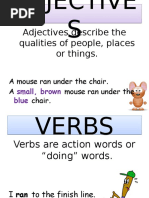LATIHAN SOAL LENGKAP DALAM MENGHADAPI TOEFL TEST. 20 carefully matching lumber, joining a chest together without resort to nails or glue,.

Does thinking about TOEFL idioms make your blood run cold, or do you think they’re a piece of cake? If this sentence has you scratching your head, we’re here to help! This guide will explain idioms, which are phrases that mean something different than what you might think at first. We’ll go over how idioms are tested on each section of the TOEFL, give you a list of the 37 idioms you should know for the exam, and end with the best methods for studying idioms. Let’s get this show on the road and start learning about idioms for TOEFL! What Are Idioms? An idiom is a word or phrase which has a different meaning than its literal definition.
If someone uses the phase “crying wolf,” you may know what both “crying” and “wolf” mean, but when they’re used together, this phrase takes on an entirely new meaning. “Crying wolf” is an idiom that means asking for help when you don’t actually need it. The definition of the idiom has nothing to do with the definition of either of the two words that make it up. Idioms can be confusing, even for people who grew up speaking English, so they’re often especially difficult for non-native English speakers who haven’t been exposed to the sayings before.
Knowing common idioms can help you understand English better and help you sound more like a native speaker when you use them yourself. 4 vedas in gujarati pdf download. If you’ve studied idioms for other standardized tests like the SAT or GRE, know that the types of idioms tested on those exams are different than the idioms tested on the TOEFL.
The SAT and GRE don’t test the types of expressions you can see in the chart below. Instead, they test you on prepositional idioms and idioms with gerunds/infinitives. You don’t need to worry about these for the TOEFL, but it’s important to know that, if you’re taking the TOEFL and one of the other exams, you’ll need to study both types of idioms. By the way: we have built the world's best. Get online practice (TPO-sytle!) and on Speaking and Writing.
To be fair, it's possible to get a good TOEFL score studying alone. But PrepScholar is the if you are worried about the TOEFL and are struggling to improve your score. How Important Are Idioms on the TOEFL? Idioms are not one of the key skills tested on the TOEFL, like reading comprehension or your ability to form an argument. In fact, it’s possible that you may get through an entire TOEFL without coming across a single idiom. However, idioms are still important to learn if you’re studying for the TOEFL. If you come across an idiom you don’t know on the TOEFL, it can be hard to understand the sentence or paragraph it’s in.
This can cause you to lose points on the test if you can’t figure out what’s being discussed. Therefore, you should devote some of your TOEFL study time to understanding how idioms will be used on the TOEFL and learning common idioms. Finally, if you know TOEFL idioms well, you can also include one or two in your own Speaking or Writing responses to further show the graders how strong your English skills are. Including an idiom every now and then in your responses helps you sound more like a native speaker, which can earn you higher scores. How Are Idioms Tested on the TOEFL? When you understand how idioms are tested on the TOEFL, you’ll know what to expect before you even begin the test. For all sections of the TOEFL, it’s important to know that you won’t see any questions asking you directly about an idiom.
For example, you’ll never see a Reading question ask “What’s the definition of ‘feeling blue’?” or a Speaking question that asks you to “Describe an experience that gave you butterflies in your stomach.” Idioms are too obscure for most non-native speakers for the TOEFL to test them directly like that. Instead, TOEFL idioms will be included within written passages or audio clips. They usually won’t be a key part of the passage, but understanding what an idiom means can help you put the rest of the passage in context and better understand what’s being discussed. Now let’s look at how specific TOEFL sections test idioms. Reading Initially, you might expect idioms to show up pretty regularly on the Reading section of the TOEFL since this is the section with the longest passages. However, TOEFL passages usually come from university-level texts and don’t include much informal writing. Since idioms are typically used in more informal and casual speech, most TOEFL Reading passages don’t include idioms.

When idioms do occur in Reading passages, they are often part of a quote or opinion expressed by someone. The idiom is sometimes (but not always!) enclosed in quotations marks which is what the creators of the TOEFL use to indicate a word or phrase with a definition different than its most commonly known one.